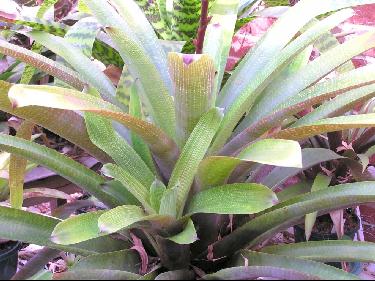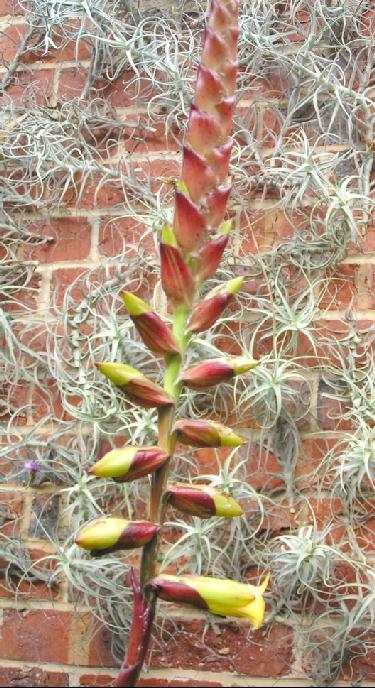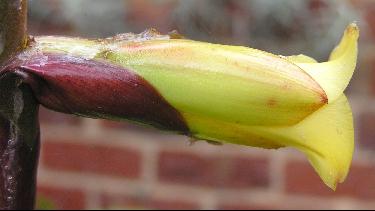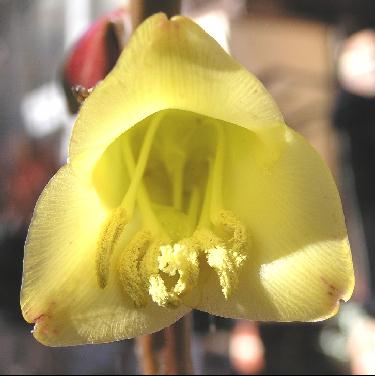“I believe it was Omar, the Tentmaker, who said, "Each morn a thousand roses brings, you say, but where leaves the rose of yesterday?"
This is a question that could well be applied to all kinds of plants, for a perusal through any old catalogue - say one of fifty years ago - will disclose a number of varieties no longer to be found in our gardens, public or private, and in none of the nurseries. What has happened to these plants? Where have they gone? Many were outstanding species, and their loss to horticulture is great. That so many good plants have disappeared is indeed a mystery.
Because of injudicious collecting, many wildlings, too, are disappearing from their native habitats - orchids and bromeliads once found in certain localities have all but vanished. Often, unfortunately, these plants so avidly but so carelessly collected, will not stand fumigation or thrive under cultivation, and so die and are lost forever.
The mad race to produce something new has finally caught up with the bromeliad fancier. Crosses and recrosses are being made in such hectic abandon that one wonders what will be the end result. In many instances, the new generation of plants can in no way compete in beauty or in style with the parents. In the meantime, many old beauties have been put aside and forgotten, to come, perhaps, to an ignominious end on the back shelf. Most likely, many fine species have been lost to cultivation in this way. True, two world wars brought havoc to Europe and particularly to greenhouses and plant collections, but this author believes that some effort should be made to ferret out those lost gems, perhaps still to be found in some obscure botanical garden or private collection.
For example, who today has Vriesea ginoti, described so eloquently by the late Jules Chantrier in one of his catalogues? A cross between Vriesea fenestralis and Encholirion roseum, it was described as being a very interesting and ornamental plant, having remarkable vigor, being larger and more-striking looking than Vriesea fenestralis. Another beauty that M. Chantrier relished was his V. fenestralis var. mortfontanensis - a cross between V. fenestralis and V. tessellate. This plant was more vividly marked than its parents, the under sides of the leaves being a deep red which showed through the leaves giving them a roseate glow. Perhaps these crosses can be remade if superior clones are used. However, this is not true of species that somehow have just slipped away from the scene.
A look through some of Mulford B. Foster's old listings will disclose plants no longer on sale today. There may be some fortunate hobbyists who still have some of his early rarities - for example, the charming little Vriesea racineae, but for most of us this is a lost gem.
It is sincerely hoped that those members who have large collections which include many such rarities will see to it that these plants are perpetuated so that they are not lost - in the mad race for new hybrids - to horticulture. V. P.”
As Padilla says, V. ‘Ginoti’ does not seem to be in the US from perusal of catalogues of the period nor of any more recent dates.
The scene now changes to the 1990’s when Peter Huddy in Adelaide, South Australia started taking a keen interest in Vriesea and the problems of identifying species and hybrids. He bought this V. fenestralis x V. platynema var rosea from the Eastern States of Australia which he considered just had to be a remake of ‘Ginoti’. We do not know the hybridist but if Australian, then we know now that the identity of the var. rosea is in doubt! In 1998 Margaret obtained this plant from Peter and its photo is shown - showing attributes of both parents - but we have nothing else to compare with the original cross in Europe before World War II.
2009 and 2010 we got Ross Little involved, or should I say he started to get me involved by querying the V. platynema hybrids that seemed to be so prevalent in collections and invariably without a name or wrongly named as species. Only some with species names just did not tally with the original description.
From Ross’s now famous Ledger we know now that Vr. platynema x fenestralis was available at the Brisbane Conference in 1993. We also know from Olive Trevor that many of these plants with this parentage or reverse were sold at that Conference and had originated from both Bob Larnach and Lou Forrest, and there was no way to discern who was the originator. We also know that neither Bob nor Lou felt it necessary to name and record their hybrids.
The last few years has seen a resurgence in what I call the Glyph leaved Vrieseas, so much so that many hybrids are named and sold well before they reach flowering size which can take up to 10 years. Differences have been based purely on leaf markings that we know will keep changing up until maturity. The only real indicator of differences will be in the inflorescence structure and colouring. But at least clones were named so they have a traceable history. This interest in these ‘new’ hybrids has meant that the ‘old’ hybrids are being re-evaluated where we have very little history to go on.
What may be considered to be a new hybrid released by Jack Koning called ‘Frost Bite’ has been around under formula for many years.
The clone that got to South Australia and was called ‘Ginoti’ has a single spike with red floral bracts. Ross tells me he has look alikes but with much paler floral bracts that he intends to call ‘Ginoti Verde’ to differentiate. Whether they have the same parents or are separate greges is anyone’s guess. But at least we have a standard approach.
It is interesting how some people look purely at leaves, some purely flowers and some leaves and flower. How boring would it be if we all thought alike!
Lou Forrest was a member of the Bromeliad Society of Australia for many years and did work for the Sydney Botanic Gardens so had the credentials of a good horticulturist. He was actively hybridising in the 1970’s before Bob came on the scene. We can trace back ‘Angela’, ‘Erotica’, and 'Sister Angela’ to Lou but named by others who saw the potential in them. We just guessed that V. platynema was involved and now it seems that V. fenestralis could well have been too!
Vriesea Ginoti
cv. of Vr. fenestralis x platynema var. rosea?



